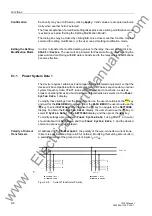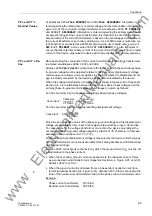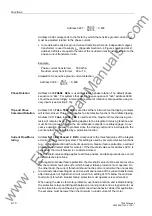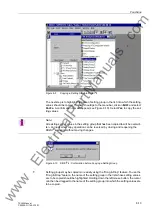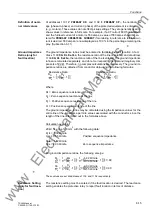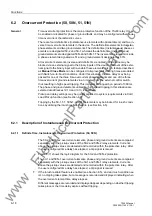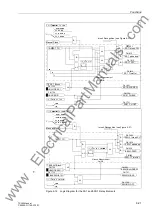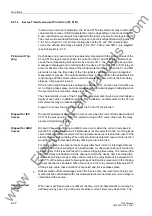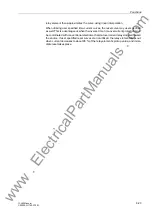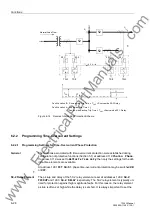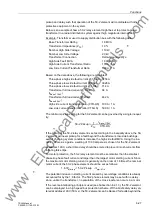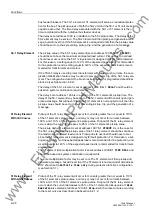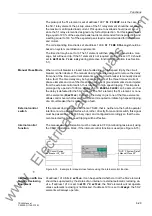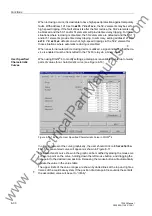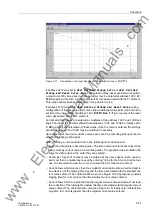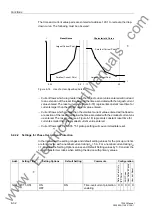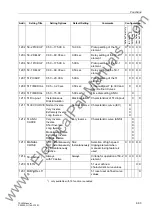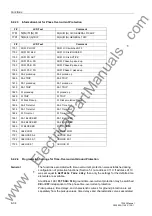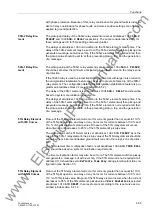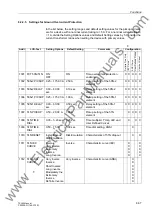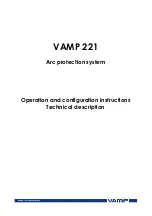
Functions
6-22
7SJ63 Manual
C53000-G1140-C120-1
6.2.1.2
Inverse Time-Overcurrent Protection (51, 51N)
Inverse time-overcurrent protection, the 51 and 51N relay elements may contain IEC
characteristic curves or ANSI characteristic curves depending on the model ordered.
A user-specified curve may also be applied to the inverse-overcurrent relay elements.
The curves and associated formulas are given in Technical Specifications (Figures 10-
1 to 10-3 in Section 10.3). During configuration of the 51 and 51N characteristic
curves, the definite time relay elements (50-2, 50-1, 50N-2, and 50N-1) are enabled
(see Subsection 6.2.1.1).
Pickup and Trip-
ping
Each phase and ground current is separately compared with the pickup values of the
51 and 51N relay elements. When the current in the 51 and 51N relay elements ex-
ceeds the corresponding pickup value by a factor of 1.1, the element picks up and a
message is displayed and recorded within the device. Pickup of a 51 or 51N relay el-
ement is based on the rms value of the fundamental harmonic
.
When the 51 and 51N
elements pickup, the time delay of the trip signal is calculated using an integrated
measurement process. The calculated time delay is dependent on the actual fault cur-
rent flowing and the selected time-current characteristic curve. Once the time delay
elapses, a trip signal is issued.
If the inrush restraint feature is enabled (see Section 6.5), and an inrush condition ex-
ist, no tripping takes place, but a message is recorded and displayed indicating when
the overcurrent element time delay elapses.
The characteristic curves of the 51 and 51N relay elements may be selected indepen-
dently of each other. In addition, pickup, time multipliers, and time dials for the 51 and
51N elements may be individually set.
Figure 6-13 shows the logic diagram for the 51 and 51N protection.
Dropout for IEC
Curves
Dropout of an element using an IEC curve occurs when the current decreases to about
95 % of the pickup value. When an element using an IEC curve drops out, the relay
element immediately resets.
Dropout for ANSI
Curves
Dropout of an element using an ANSI curve occurs when the current decreases to
about 95 % of the pickup value if instantaneous reset is selected, or 90 % of the pickup
value if disk emulation is selected. When instantaneous reset is selected, reset of the
element occurs without delay. When disk emulation is selected, reset occurs just as it
would for an electromechanical relay utilizing an induction disk.
For disk emulation, the reset process begins after fault current is interrupted. Reset
corresponds to the unwinding of an induction disk. A subsequent pickup of the device
element prior to full reset will result in a reduced tripping time delay. The reduced trip-
ping time delay will be based on the degree to which the device had reset when the
subsequent pickup occurred. When the current in the relay element is between 90 %
and 95 % of the pickup value following dropout, neither disk movement in the tripping
or reset direction is simulated. When the current in the relay elements falls below 5 %
of the pickup value, disk emulation is canceled and full reset takes place.
Disk emulation offers advantages when the inverse time, time-overcurrent relay ele-
ments must be coordinated with conventional electromechanical overcurrent relays lo-
cated toward the source.
User Specified
Curves
When user specified curves are utilized, the time-current characteristic curve may be
defined point by point. Up to 20 pairs of values (current, time) may be entered. The
www
. ElectricalPartManuals
. com

